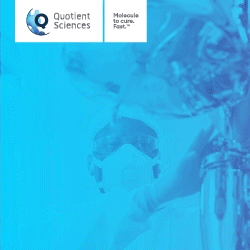Denali Therapeutics Announces Publication Demonstrating the Potential of the Oligonucleotide Transport Vehicle Platform to Achieve Broad Biodistribution of Antisense Oligonucleotides in the CNS & Muscle Following Intravenous Administration
Denali Therapeutics Inc. recently announced publication of nonclinical data in the August 14, 2024, issue of Science Translational Medicine (link) demonstrating the ability of the Oligonucleotide Transport Vehicle (OTV) platform to achieve broad biodistribution of antisense oligonucleotides (ASOs) in the central nervous system (CNS) and skeletal and cardiac muscle following intravenous (IV) administration.
Oligonucleotides, such as ASOs, are designed to modify gene expression and hold promise as therapeutics for neurological disorders. A major challenge in their development, however, is that oligonucleotides are unable to cross the BBB on their own. Currently, oligonucleotides must be delivered directly to the CNS through invasive routes such as intrathecal delivery and still may not distribute uniformly throughout the brain where treatment is needed. Denali invented the Transport Vehicle (TV) platform to overcome the challenge of the BBB and deliver multiple types of therapeutic cargo across the BBB, including antibodies, enzymes, and other proteins. The TV platform has been clinically validated and three TV-enabled programs are currently in clinical development.
“This is the first publication of data showing that ASOs can be delivered uniformly throughout the primate CNS and to muscle via a less invasive route of intravenous administration enabled by the TV platform,” said Joseph Lewcock, PhD, Chief Scientific Officer of Denali. “Across modalities, enhanced brain uptake with uniform distribution throughout the CNS is a defining hallmark of the TV. Publication of our OTV research is a significant milestone supporting TV platform expansion as we advance our first two OTV programs towards the clinic for Alzheimer’s disease and Parkinson’s disease.”
In the Science Translational Medicine article, Denali scientists describe using OTV, which is an engineered TV conjugated to an ASO, for delivery of therapeutic molecules to the mouse and nonhuman primate brain. The data show that OTV can successfully cross the BBB following IV administration and provide cumulative and sustained knockdown of the ASO target gene expression across multiple CNS regions and all major cell types, including endothelial cells, neurons, astrocytes, microglia, and oligodendrocytes. Additionally, OTV enabled knockdown of the ASO target gene expression in historically difficult to target peripheral muscle tissues, including skeletal and cardiac muscle. In comparison to other clinically relevant ASO delivery platforms, including direct delivery of a non-TV-enabled ASO to the cerebrospinal fluid, systemic OTV enabled a much more uniform ASO biodistribution profile and knockdown of the target.
The blood-brain barrier (BBB) is essential in maintaining the brain’s microenvironment and protecting it from harmful substances and pathogens circulating in the bloodstream. Historically, the BBB has posed significant challenges to drug development for central nervous system diseases by preventing most drugs from reaching the brain in therapeutically relevant concentrations. Denali’s Transport Vehicle (TV) platform is a proprietary technology designed to effectively deliver large therapeutic molecules such as antibodies, enzymes, proteins, and oligonucleotides across the BBB after intravenous administration. The TV technology is based on engineered Fc domains that bind to specific natural transport receptors, such as transferrin receptor and CD98 heavy chain amino acid transporter, which are expressed at the BBB and deliver the TV and its therapeutic cargo to the brain through receptor-mediated transcytosis. In animal models, antibodies and enzymes engineered with the TV technology demonstrate more than 10- to 30-fold greater brain exposure than similar antibodies and enzymes without this technology. Oligonucleotides engineered with the TV technology demonstrate more than a 1,000-fold greater brain exposure in primates than systemically delivered oligonucleotides without this technology. Improved exposure and broad distribution in the brain may increase therapeutic efficacy by enabling widespread achievement of therapeutically relevant concentrations of product candidates. The TV platform has been clinically validated and three TV-enabled programs are currently in clinical development.
Denali Therapeutics is a biopharmaceutical company developing a broad portfolio of product candidates engineered to cross the blood-brain barrier for neurodegenerative diseases and lysosomal storage diseases. Denali pursues new treatments by rigorously assessing genetically validated targets, engineering delivery across the blood-brain barrier, and guiding development through biomarkers that demonstrate target and pathway engagement. Denali is based in South San Francisco. For more information, visit www.denalitherapeutics.com.
Total Page Views: 6406












